
Discovering New Amsterdam: Guyana's Hidden Gem
Explore New Amsterdam in Guyana, a town rich in history, nature, and culture. Discover colonial landmarks, vibrant festivals, and serene river landscapes in this hidden gem.
Nestled along the eastern bank of the Berbice River, New Amsterdam is a picturesque town that offers a unique blend of history, culture, and natural beauty. As the second largest town in Guyana, New Amsterdam is a key destination for those looking to explore the rich heritage and serene landscapes of this South American country. Stroll through the town's charming streets and you will be greeted by colonial-era architecture, colorful markets, and friendly locals. The town's history dates back to the Dutch colonial period, which is evident in the well-preserved buildings and historical sites scattered throughout the area. Notable landmarks include the New Amsterdam Town Hall, the Mission Chapel, and the Berbice Bridge, which connects the town to other parts of the country. Nature lovers will find plenty to enjoy in and around New Amsterdam. The nearby Canje River is a hotspot for birdwatching, fishing, and boat tours. The lush greenery and diverse wildlife make it a perfect destination for eco-tourism. Don't miss the opportunity to visit the Fort Nassau ruins, a historical site located just a short boat ride away, which offers a glimpse into the region's colonial past. New Amsterdam is also known for its vibrant festivals and cultural events. The annual Mashramani celebration, which marks Guyana's Republic Day, is a colorful and lively event that showcases the town's rich cultural diversity. Visitors can enjoy traditional music, dance, and local cuisine during this festive period.
Local tips in New Amsterdam
- Visit the local markets early in the morning for the freshest produce and to experience the bustling atmosphere.
- Hire a local guide to explore the Canje River for the best birdwatching and wildlife spotting opportunities.
- Check the schedule for the Berbice Bridge to ensure smooth travel plans as it has specific opening and closing times for river traffic.
- Attend the Mashramani celebration if visiting in February to experience New Amsterdam's vibrant culture and festivities.
- Bring insect repellent for outdoor activities, especially when visiting natural sites like the Canje River and Fort Nassau.
Discovering New Amsterdam: Guyana's Hidden Gem
Nestled along the eastern bank of the Berbice River, New Amsterdam is a picturesque town that offers a unique blend of history, culture, and natural beauty. As the second largest town in Guyana, New Amsterdam is a key destination for those looking to explore the rich heritage and serene landscapes of this South American country. Stroll through the town's charming streets and you will be greeted by colonial-era architecture, colorful markets, and friendly locals. The town's history dates back to the Dutch colonial period, which is evident in the well-preserved buildings and historical sites scattered throughout the area. Notable landmarks include the New Amsterdam Town Hall, the Mission Chapel, and the Berbice Bridge, which connects the town to other parts of the country. Nature lovers will find plenty to enjoy in and around New Amsterdam. The nearby Canje River is a hotspot for birdwatching, fishing, and boat tours. The lush greenery and diverse wildlife make it a perfect destination for eco-tourism. Don't miss the opportunity to visit the Fort Nassau ruins, a historical site located just a short boat ride away, which offers a glimpse into the region's colonial past. New Amsterdam is also known for its vibrant festivals and cultural events. The annual Mashramani celebration, which marks Guyana's Republic Day, is a colorful and lively event that showcases the town's rich cultural diversity. Visitors can enjoy traditional music, dance, and local cuisine during this festive period.
When is the best time to go to New Amsterdam?
Iconic landmarks you can’t miss
New Amsterdam Market
Explore the vibrant New Amsterdam Market, a lively auto market showcasing vehicles, local culture, and the spirit of Guyanese commerce.
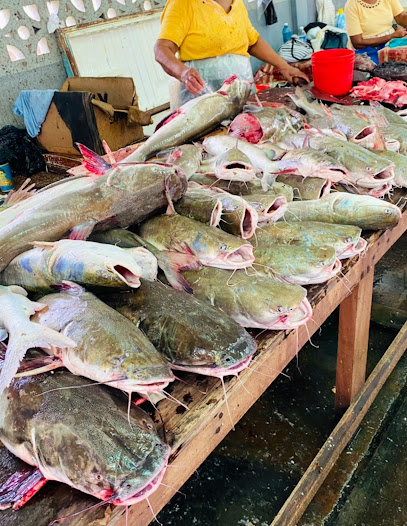
State House (Governor House)
Explore State House, a captivating historical landmark in New Amsterdam, Guyana, showcasing colonial architecture and rich cultural heritage.
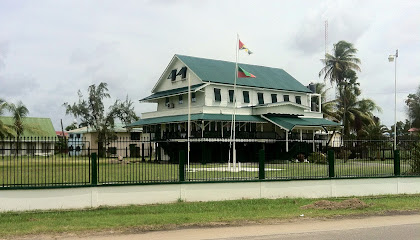
Mission Chapel Congregational Church, New Amsterdam
Explore the tranquility and beauty of the Mission Chapel Congregational Church in New Amsterdam, a serene spiritual retreat in the heart of the community.
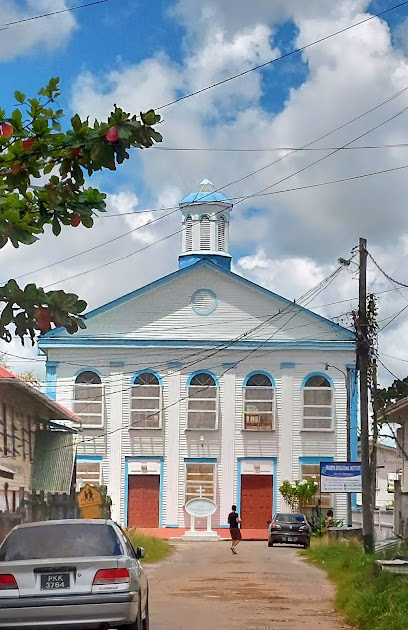
New Amsterdam Recreational Park
Discover tranquility in New Amsterdam Recreational Park, a perfect blend of nature and relaxation in the heart of Guyana.

I Love New Amsterdam Sign
Explore the rich cultural heritage of New Amsterdam at the iconic I Love New Amsterdam Sign, a must-visit landmark for tourists and history enthusiasts alike.
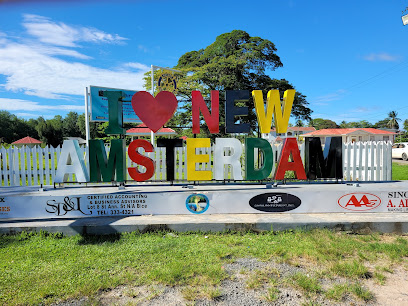
Unmissable attractions to see
Museum Kura Hulanda
Explore the rich heritage of Curaçao at Museum Kura Hulanda, where history comes alive through compelling exhibits and cultural artifacts.
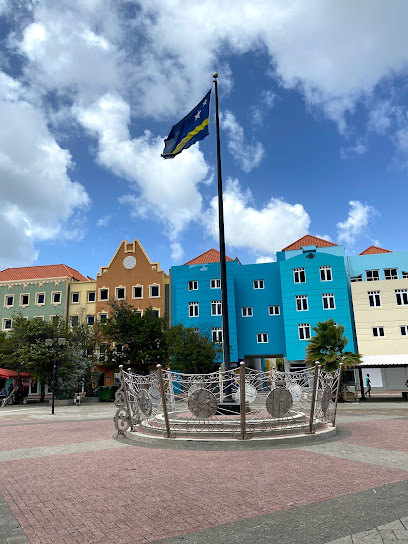
Mikve Israel-Emanuel Synagogue
Explore the Mikve Israel-Emanuel Synagogue, a historical gem in Willemstad, Curaçao, showcasing Jewish heritage and architectural beauty.
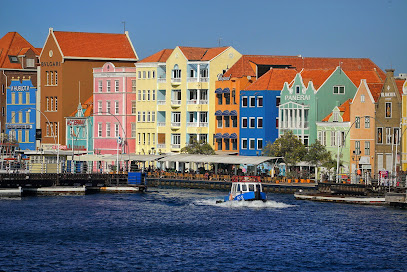
Punda Love Heart
Discover the romantic ambiance of Punda Love Heart, a must-visit tourist attraction in Willemstad, Curaçao, perfect for capturing unforgettable moments.
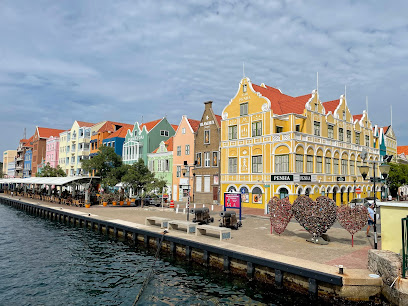
Rose Hall Market
Experience the vibrant culture and local flavors at Rose Hall Market, the must-visit marketplace in Port Mourant, Guyana.
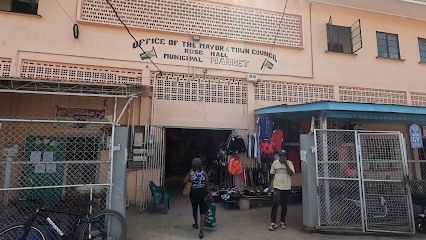
Het Koto Museum
Discover Surinamese heritage at Het Koto Museum in Paramaribo, where culture, history, and community come alive through captivating exhibits.
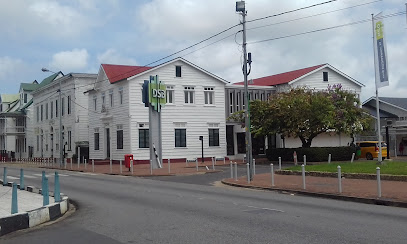
Free Walking Tours Curaçao
Explore the vibrant streets of Willemstad with Free Walking Tours Curaçao, a journey through history, culture, and stunning architecture.
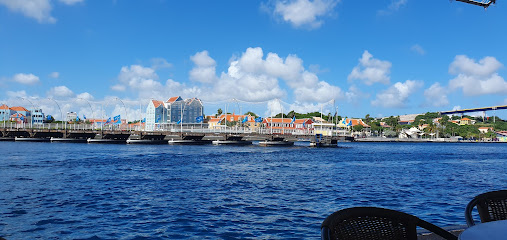
Frederiksdorp
Explore Frederiksdorp, a serene plantation in Suriname, where agriculture meets history amidst stunning landscapes and a warm local community.
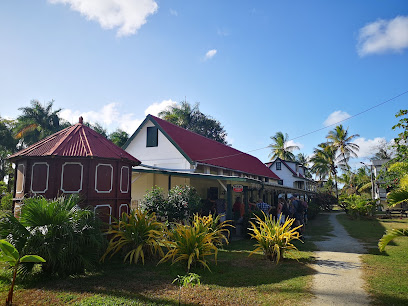
Horse Ranch Bonaire
Discover the beauty of Bonaire through horseback riding and animal encounters at Horse Ranch Bonaire, a family-friendly equestrian paradise.
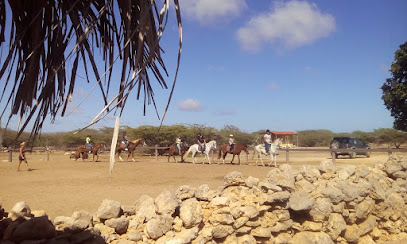
Hurakabra River Resort
Discover the tranquil beauty of Hurakabra River Resort, a perfect blend of adventure and relaxation in the heart of Guyana's lush landscapes.
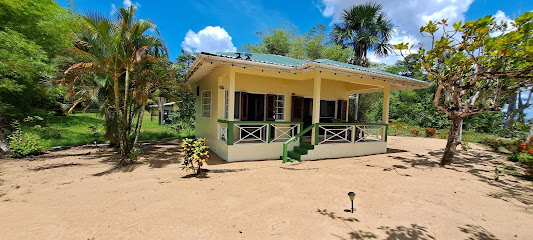
Joel House
Explore Joel House in New Amsterdam, a tranquil birdwatching area teeming with diverse avian species and rich biodiversity for nature enthusiasts.
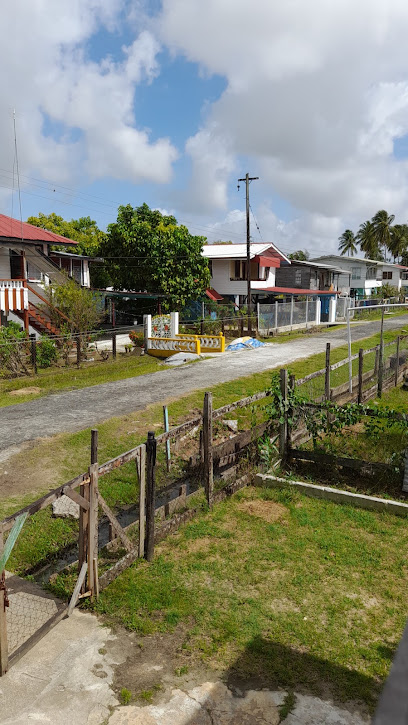
Waterfort Arches
Explore the historic Waterfort Arches in Willemstad, Curaçao – a captivating landmark echoing the island's rich heritage and architectural beauty.
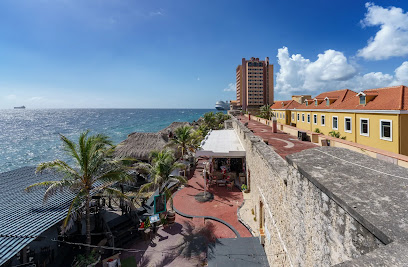
Keith And Sons Flower Garden
Explore the vibrant beauty of Keith And Sons Flower Garden, a serene oasis in New Amsterdam filled with colorful blooms and lush landscapes.
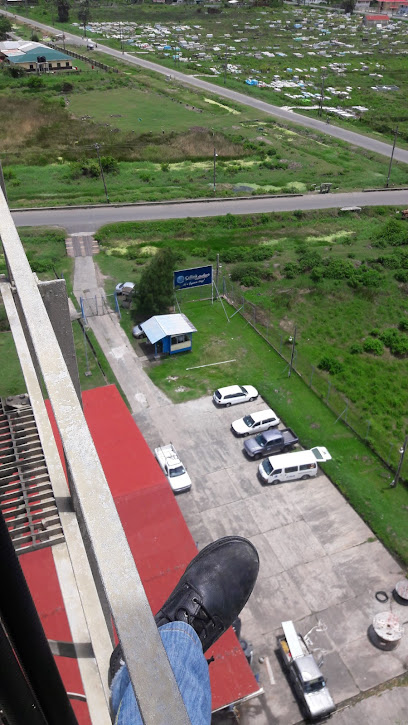
Sloth Island
Explore the tranquil beauty of Sloth Island in Guyana, a wildlife haven perfect for nature lovers and adventure seekers.
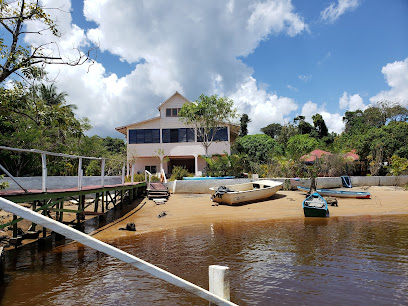
The Church of Jesus Christ of Latter-day Saints
Discover spiritual serenity and community connection at The Church of Jesus Christ of Latter-day Saints in New Amsterdam, a welcoming haven for travelers.
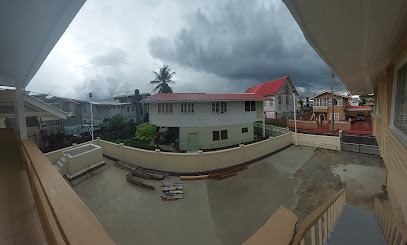
Mission Chapel Congregational Church, New Amsterdam
Discover the tranquil beauty and historical significance of Mission Chapel Congregational Church in New Amsterdam, a hidden gem for spiritual and cultural exploration.
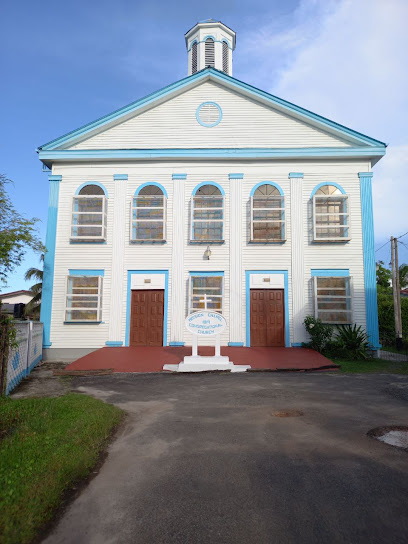
Essential places to dine
Big B's Baksh Restaurant (Halall) - Rosignol
Experience authentic Halal cuisine at Big B's Baksh Restaurant in Rosignol - where every meal tells a story of flavor.

Sue Brothers
Experience authentic Chinese flavors at Sue Brothers in New Amsterdam Berbice – a culinary gem where tradition meets taste.
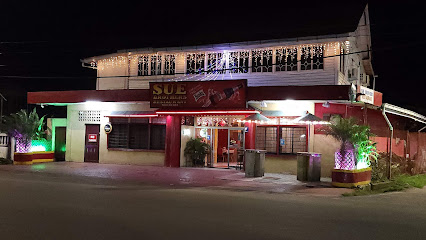
Future Sensation
Experience the essence of China at Future Sensation - where authentic flavors meet warm hospitality in New Amsterdam.
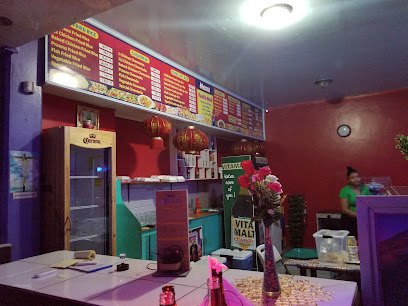
Demico, New Amsterdam
Experience the rich flavors of Guyanese cuisine at Demico in New Amsterdam - where every meal tells a story.
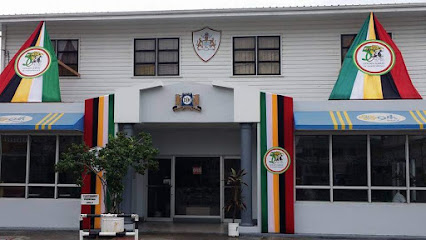
La Caribe Diner
Experience the vibrant flavors of Guyana at La Caribe Diner – where local tradition meets culinary delight.
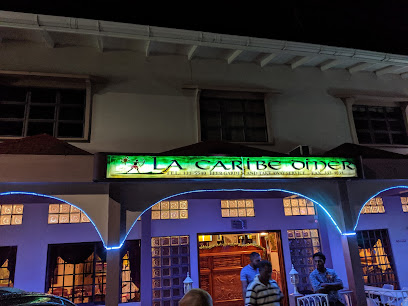
Church's Chicken
Discover the mouthwatering delights at Church's Chicken in Rosignol—where crispy fried chicken meets warm hospitality.
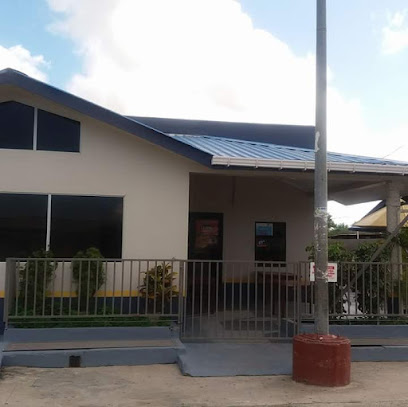
Fordy’s Catering Grill & Bar
Discover authentic Guyanese cuisine at Fordy’s Catering Grill & Bar in New Amsterdam – where every meal tells a story.
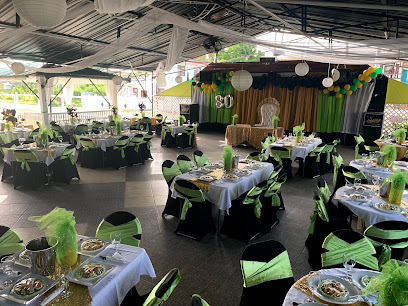
C&M Bakery and Snackette
Discover the rich flavors of Guyana at C&M Bakery and Snackette in New Amsterdam - where every bite is a taste of tradition.

Lim Kang Restaurant
Experience authentic Cantonese flavors at Lim Kang Restaurant in New Amsterdam - where culinary tradition meets warm hospitality.
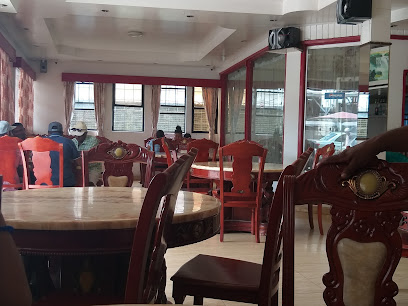
CARIBBEAN CUISINE RESTAURANT & COCKTAIL BAR
Discover authentic Caribbean flavors at Berbice's premier restaurant and cocktail bar, where vibrant cuisine meets island-inspired cocktails.
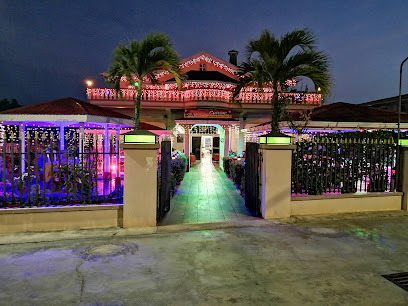
Mohamed's Halal Resturant
Discover authentic halal dining at Mohamed's Halal Restaurant in New Amsterdam – where every dish tells a flavorful story.
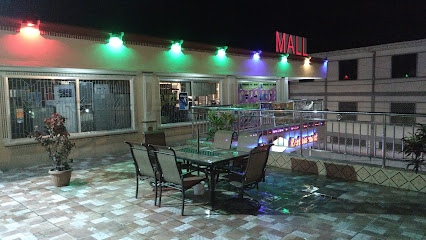
Big B's Baksh Restaurant (Halall) New Amsterdam
Discover delicious halal fast food at Big B's Baksh Restaurant in New Amsterdam - where flavor meets convenience!
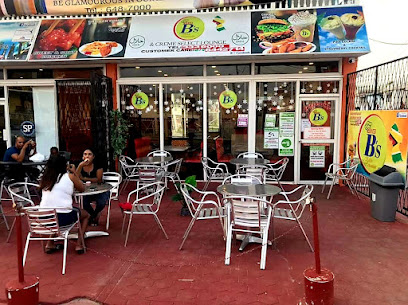
Floppy Chick-Inn Restaurant and Bar
Discover delicious grilled cuisine at Floppy Chick-Inn Restaurant and Bar in New Amsterdam—an unforgettable dining experience awaits!
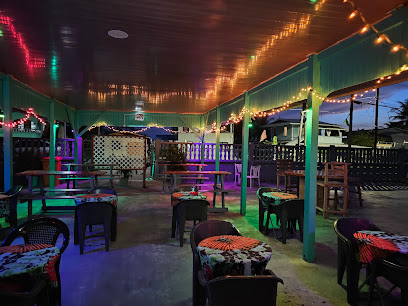
J&S bar
Discover the heart of New Amsterdam at J&S Bar - where local flavors meet vibrant nightlife in an unforgettable dining experience.
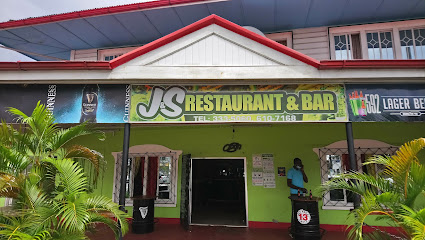
Yankee Boyz Golden Fried
Experience mouthwatering fried delicacies at Yankee Boyz Golden Fried in New Amsterdam - a culinary treasure not to be missed.
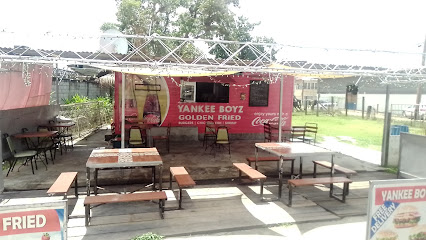
Markets, malls and hidden boutiques
J's Supermarket
Explore J's Supermarket in New Amsterdam for a delightful shopping experience, offering a variety of groceries, clothing, and local products.
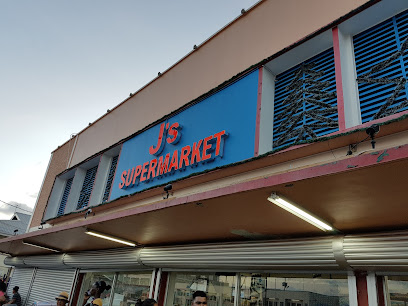
B’s Mart
Discover the essence of Guyanese culture at B's Mart, your go-to grocery store for local and international delights in New Amsterdam.

A. Ally & Sons Superstore
Explore A. Ally & Sons Superstore in New Amsterdam for a fantastic shopping experience, featuring electronics, appliances, and local treasures.
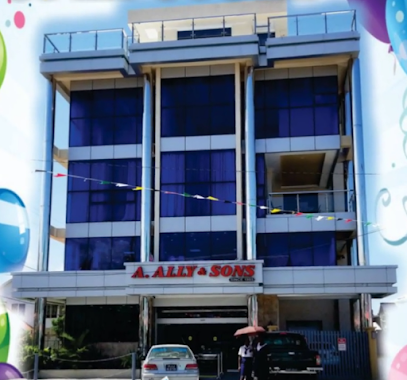
Lloyd & Kim's Fashion
Explore unique fashion and local treasures at Lloyd & Kim's Fashion, a vibrant variety store in New Amsterdam, Guyana.

F.Ali And Daughters
Explore local flavors and essentials at F.Ali And Daughters, a vibrant supermarket in New Amsterdam, perfect for all your shopping needs.
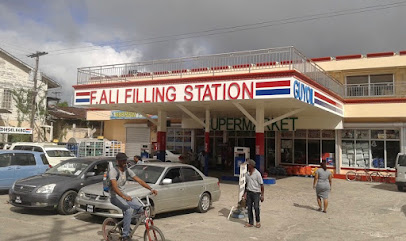
Unique Styles
Discover Unique Styles in New Amsterdam - Your destination for trendy clothing and stylish shelving solutions.
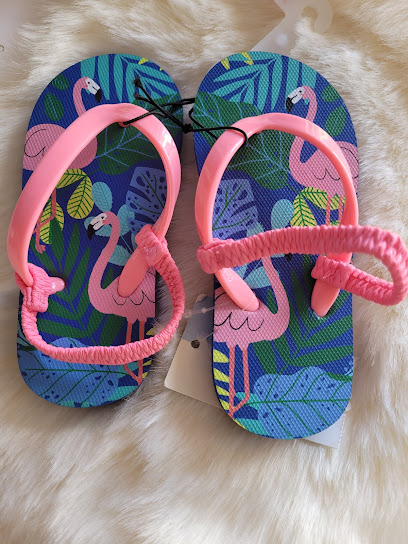
Jen's Creation Clothing Store
Explore unique local fashion at Jen's Creation Clothing Store in New Amsterdam, where style meets local craftsmanship.

R. Sookraj & Sons' Supermarket And General Store
Discover a local shopping gem in New Amsterdam at R. Sookraj & Sons' Supermarket, where hardware meets grocery for an unforgettable experience.

hardyal general store
Experience the charm of local shopping at Hardyal General Store in New Amsterdam, offering a diverse range of groceries, clothing, and household goods.
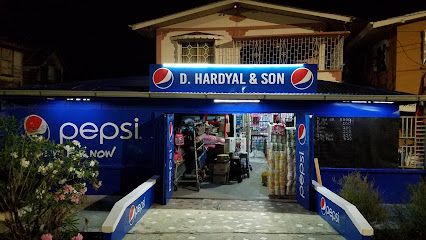
Eternal Self Care, Apparels & Accessories
Discover a unique blend of clothing, books, candles, and teas at Eternal Self Care in Berbice, where local culture and creativity come alive.
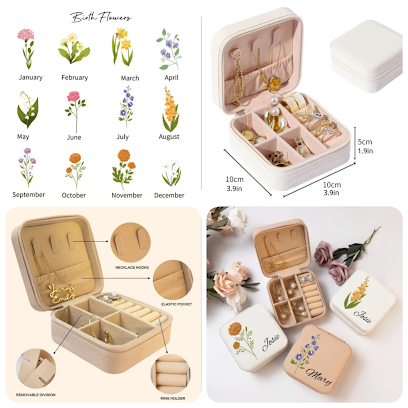
Exclusive fashion
Discover Exclusive Fashion in New Amsterdam, where luxury meets style with a curated selection of unique clothing for every fashion enthusiast.

Singers Guyana Inc
Explore Singers Guyana Inc for exquisite furniture reflecting the rich culture of Guyana, perfect for home decor or unique souvenirs.

Bob & Sons Grocery Shop
Explore local flavors at Bob & Sons Grocery Shop in New Amsterdam, where quality meets community spirit and unique products await.
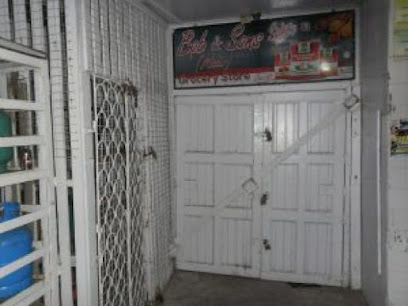
Full House Furniture
Explore Full House Furniture in New Amsterdam for unique local furnishings, perfect for home decor and memorable gifts reflecting regional charm.

HUSH.GY
Explore HUSH.GY in New Amsterdam for unique consignment treasures, vintage fashion, and local artistry that capture the essence of Berbice.

Essential bars & hidden hideouts
Future Sensation
Experience the vibrant flavors of authentic Chinese cuisine at Future Sensation in New Amsterdam, a must-visit for food enthusiasts.
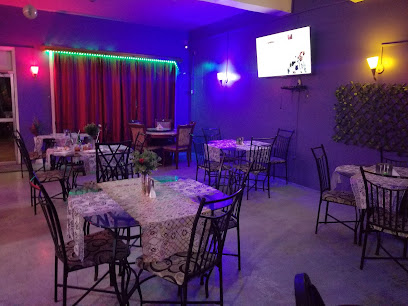
Demico, New Amsterdam
Experience the vibrant culinary scene at Demico, New Amsterdam, where local flavors come to life in a welcoming atmosphere.
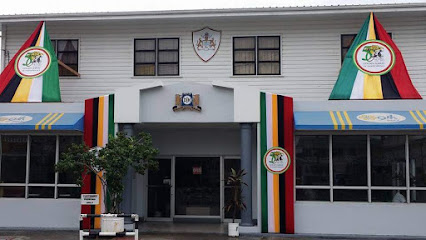
La Caribe Diner
Discover the authentic tastes of the Caribbean at La Caribe Diner in New Amsterdam, where every meal is a festive celebration of flavor.

C&M Bakery and Snackette
Discover the flavors of Guyana at C&M Bakery and Snackette, where every bite is a taste of local tradition and hospitality.

Lim Kang Restaurant
Discover the authentic flavors of Cantonese cuisine at Lim Kang Restaurant, a culinary gem in New Amsterdam, perfect for food lovers and adventurers alike.
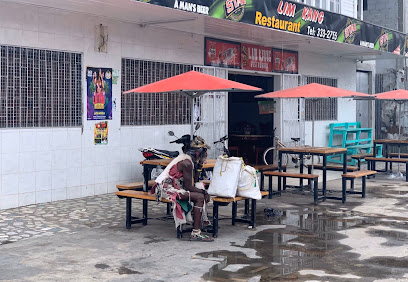
Hommee Hotel Restaurant & Bar
Discover comfort and culinary delights at Hommee Hotel Restaurant & Bar in New Amsterdam, your ideal getaway in Guyana.
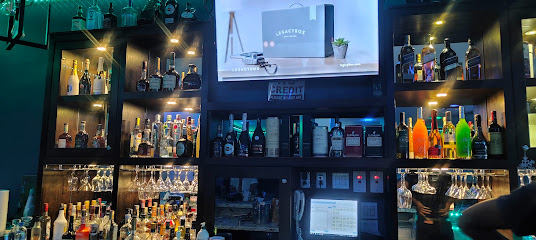
Banks DIH New Amsterdam
Discover the vibrant atmosphere and local flavors at Banks DIH New Amsterdam, a must-visit bar for every traveler exploring Guyana.

Zero Gravity Sports Bar & Hookah Lounge
Experience the vibrant nightlife at Zero Gravity Sports Bar & Hookah Lounge, where sports, hookah, and local flavors come together in New Amsterdam.
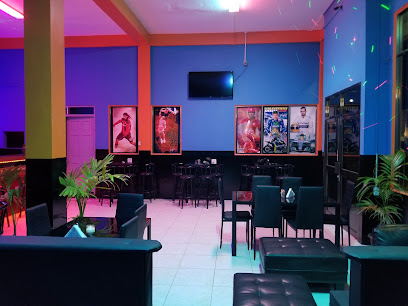
Floppy Chick-Inn Restaurant and Bar
Experience the best of local cuisine at Floppy Chick-Inn Restaurant and Bar, where delicious grilled dishes and a welcoming atmosphere await.
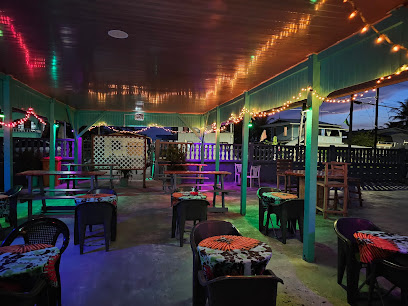
Epics Bar/Club
Experience the vibrant nightlife at Epics Bar/Club in New Amsterdam, where great drinks and an electric atmosphere await every visitor.
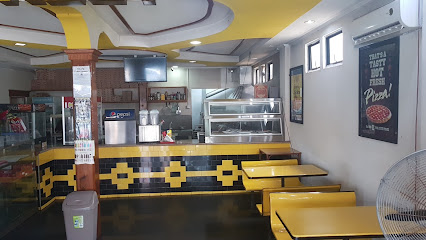
ONAWA'S FISHSHOP AND GUINNESS BAR
Discover fresh seafood and local drinks at Onawa's Fishshop and Guinness Bar in New Amsterdam, a vibrant spot for culinary adventures.
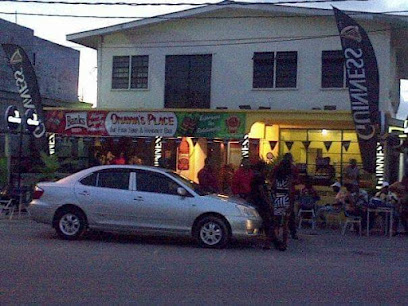
Buckanair Bar
Buckanair Bar: A lively New Amsterdam bar offering a vibrant atmosphere and a diverse drink menu, perfect for unwinding after a day of exploration.

Lizzy's Restaurant & Bar
Discover the vibrant flavors and warm hospitality at Lizzy's Restaurant & Bar in New Amsterdam, where local cuisine meets exceptional dining.

10th Street pizza Fried chicken Ice cream coffee
Discover the flavors of New Amsterdam at 10th Street, where pizza, fried chicken, ice cream, and coffee come together for a unique culinary experience.

Onyx Lounge
Discover relaxation at Onyx Lounge, where exquisite drinks and a serene atmosphere await you in the heart of New Amsterdam.

Local Phrases
-
- HelloWah Gwan
[Wa Guh-wan] - GoodbyeLater
[Lay-tuh] - YesYa
[Yah] - NoNah
[Nuh] - Please/You're welcomePlis/Tank yuh
[Pleez/Tank yuh] - Thank youTenkyuh
[Ten-kyuh] - Excuse me/SorryPardon me/Sarry
[Pah-dun me/Sah-ree] - How are you?How yuh deh?
[How yuh deh] - Fine. And you?Ah'right. An yuh?
[Ah-ryt. An yuh?] - Do you speak English?Yuh speak English?
[Yuh speak Ing-glish] - I don't understandMi nah ondastan
[Mee nah und-uh-stan]
- HelloWah Gwan
-
- I'd like to see the menu, pleaseMi waan see di menu, plis
[Mee wahn see dee menu, pleez] - I don't eat meatMi nah eat meat
[Mee nah eet meet] - Cheers!Skaal!
[Skahl] - I would like to pay, pleaseMi waan pay, plis
[Mee wahn pay, pleez]
- I'd like to see the menu, pleaseMi waan see di menu, plis
-
- Help!He'p!
[Heh-p] - Go away!Gwan weh!
[Gwan way] - Call the Police!Call de Police!
[Call dee Police] - Call a doctor!Call a docta!
[Call a dok-ta] - I'm lostMi lost
[Mee lost] - I'm illMi sick
[Mee sik]
- Help!He'p!
-
- I'd like to buy...Mi waan buy...
[Mee wahn buy] - I'm just lookingMi jus ah look
[Mee jus ah look] - How much is it?Awee much it deh?
[A-wee much it deh] - That's too expensiveDat too dear
[Dat too deer] - Can you lower the price?Yuh can drop de price?
[Yuh can drop dee price]
- I'd like to buy...Mi waan buy...
-
- What time is it?Awee time it deh?
[A-wee time it deh] - It's one o'clockIt one o'clock
[It one o'clock] - Half past (10)Half ten
[Half ten] - MorningMahnin
[Mahn-in] - AfternoonAftanoon
[Af-tuh-noon] - EveningEvenin
[Eve-nin] - YesterdayYestadeh
[Yes-ta-deh] - TodayToday
[To-day] - TomorrowTomorra
[To-mor-rah] - 1One
[Wun] - 2Two
[Too] - 3Tree
[Tree] - 4Fo'
[Foh] - 5Five
[Fyv] - 6Six
[Siks] - 7Seven
[Sev-en] - 8Eight
[Ayt] - 9Nine
[Nyne] - 10Ten
[Ten]
- What time is it?Awee time it deh?
-
- Where's a/the...?Weh deh...?
[Way deh] - What's the address?Wah deh address?
[Wa deh address] - Can you show me (on the map)?Yuh can show me (pan di map)?
[Yuh can show me (pan dee map)] - When's the next (bus)?Wen de next (bus)?
[Wen dee next (bus)] - A ticket (to ....)A tikkit (to ....)
[A tik-kit (to ....)]
- Where's a/the...?Weh deh...?
History of New Amsterdam
-
New Amsterdam, located in the East Berbice-Corentyne Region of Guyana, was originally established by the Dutch in the 18th century. The town was founded in 1791 and named after Amsterdam in the Netherlands. It quickly became an important administrative and commercial hub in the region.
-
During the Dutch colonial period, New Amsterdam served as the capital of the colony of Berbice. The town's layout and architecture were heavily influenced by Dutch designs. The presence of canals and Dutch-style buildings are a testament to this period, and some structures from this era still stand today.
-
In 1815, after the Napoleonic Wars, the British took control of New Amsterdam. Under British rule, the town continued to grow, benefiting from its strategic location along the Berbice River. The introduction of sugarcane plantations and the subsequent sugar industry boom contributed significantly to its economic prosperity.
-
The abolition of slavery in 1834 was a transformative period for New Amsterdam. The town's population saw a significant shift as freed African slaves settled in and around the area. This period also marked the beginning of indentured labor, primarily involving East Indians, which further diversified the cultural fabric of the town.
-
New Amsterdam is known for its rich cultural diversity, a legacy of its colonial past. The town is home to a variety of ethnic groups including Afro-Guyanese, Indo-Guyanese, Amerindians, and people of European descent. This blend is reflected in the town's festivals, cuisine, and religious practices.
-
The architectural landscape of New Amsterdam is a blend of colonial-era buildings and modern structures. Notable landmarks include the St. George's Anglican Church, which is one of the oldest buildings in the town, and the New Amsterdam Town Hall, a striking example of Victorian architecture.
-
Today, New Amsterdam is a bustling town that serves as a gateway to the hinterlands of Guyana. It retains much of its historical charm while embracing modernity. The town continues to be a center of trade, education, and healthcare in the region, making it an important focal point in Guyana.
New Amsterdam Essentials
-
New Amsterdam is located in the East Berbice-Corentyne region of Guyana. The nearest international airport is Cheddi Jagan International Airport in Georgetown, approximately 100 kilometers away. From Georgetown, you can take a bus or hire a taxi to New Amsterdam. The journey typically takes around 2 to 3 hours by road. Alternatively, you can take a minibus for a more economical option.
-
New Amsterdam is a relatively small town, so many of its attractions are within walking distance. Local taxis are readily available and are an inexpensive way to get around. Public minibuses operate within the town and connect to nearby villages. For more flexibility, consider renting a car, but be aware that road conditions can vary.
-
The official currency in Guyana is the Guyanese Dollar (GYD). Credit cards are accepted in some hotels, restaurants, and shops, but it is advisable to carry cash, especially in smaller establishments and rural areas. ATMs are available in New Amsterdam, but it is wise to withdraw sufficient cash in Georgetown before traveling to ensure you have enough funds.
-
New Amsterdam is generally a safe destination for tourists, but it is important to take standard precautions. Avoid walking alone at night in unfamiliar areas and keep an eye on your belongings in crowded places. Some areas to be cautious of include the market areas and isolated neighborhoods at night. Always stay vigilant and aware of your surroundings.
-
In case of emergency, dial 911 for immediate assistance. The New Amsterdam Hospital is available for medical emergencies. It is recommended to have travel insurance that covers medical emergencies. For minor health issues, there are pharmacies in the town where you can purchase over-the-counter medications.
-
Fashion: Do dress modestly, especially when visiting religious sites. Avoid wearing revealing clothing. Religion: Do respect local customs and traditions. Always be respectful in places of worship. Public Transport: Do be respectful and give up your seat to elderly passengers. Don’t eat or drink on public transport. Greetings: Do greet people with a handshake. A friendly greeting or a nod is also appreciated. Eating & Drinking: Do try local delicacies and accept food offerings graciously. Don’t refuse hospitality, as it is considered impolite.
-
To experience New Amsterdam like a local, visit the local markets where you can buy fresh produce and traditional Guyanese goods. Engage with locals, as they are often friendly and willing to share stories about the town’s history and culture. Don’t miss visiting the colonial-era buildings and the Canje River for a serene experience. For a unique experience, take a boat ride on the Berbice River.
Nearby Cities to New Amsterdam
-
Things To Do in Skeldon
-
Things To Do in Linden
-
Things To Do in Ituni
-
Things To Do in Bartica
-
Things To Do in Kwakwani
-
Things To Do in Anna Regina
-
Things To Do in Paramaribo
-
Things To Do in Lelydorp
-
Things To Do in Mariënburg
-
Things To Do in Brokopondo
-
Things To Do in Kamarang
-
Things To Do in Moengo
-
Things To Do in Albina
-
Things To Do in Lethem
-
Things To Do in Princes Town







